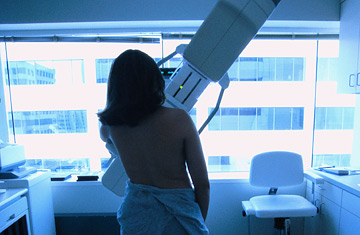
(3 of 4)
It's impossible to say how frequently such "overdiagnosis" occurs, according to the task force, but the data did conclusively show that in order to save the life of one woman in her 40s from breast cancer, 1,904 women would have to be screened every year for up to 20 years. Because it judged that the risks of harm from annual screening outweighed the benefits, the panel issued its controversial recommendation that most women ages 40 to 49 need not get routine mammograms. "We felt that women would be better served if they understood the trade-off between the benefits, harms and risks of starting at 40 or waiting a few years into their 50s," says Petitti.
That calculus is precisely what drives comparative-effectiveness research, a strategy embraced by both the House and Senate health care reform bills: figuring out which tests and treatments work best--instead of using every available treatment just because it's there--while saving money without adversely affecting health. Using magnetic resonance imaging (MRI) to screen for breast cancer, for example, isn't necessary for the vast majority of women who are at low risk of the disease; because most tumors are not aggressive, most women will not benefit from finding the first signs of tiny tumors that an MRI can detect.
Both bills in Congress would set up new institutes to organize and fund more comparative-effectiveness research, ostensibly to help guide health care policy. (The $787 billion American Recovery and Reinvestment Act of 2009 has already authorized $1.1 billion for the field.) And yet as Diana Buist, a researcher at Group Health in Seattle who received some of the stimulus funding, says, "[Comparative-effectiveness research is] a hard sell. It always has been." According to a 2007 Congressional Budget Office (CBO) report on the topic, "Some experts believed that less than half of all medical care is based on or supported by adequate evidence about its effectiveness." Instead, said the CBO, health care in the U.S. is often motivated by factors like "enthusiasm for the newest technology" and a fee-for-service payment system that rewards doctors based not on outcomes but the number and price of treatments they prescribe and perform.
The status quo won't be easy to change, largely because evidence-based medicine often runs counter to our personal understanding of risk. It's intuitively difficult for a woman in her 40s to stop getting annual mammograms when she is fully aware that they could save her life. Feeding this instinct is the relentless effort on the part of doctors and disease advocacy groups to promote preventive-health behaviors. Many feel the push may have done the public a disservice by instilling the belief that screenings are purely beneficial. "We have not rounded out that discussion with the American public about the harms," says Dr. Therese Bevers, a professor of clinical cancer prevention at M.D. Anderson Cancer Center in Houston.
